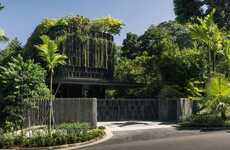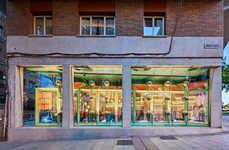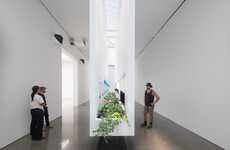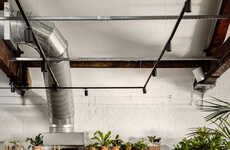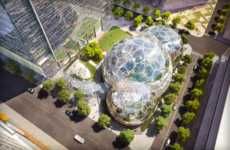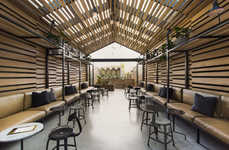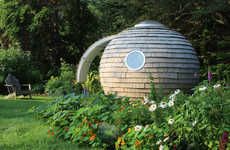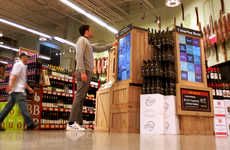
The Great Green Wall in a Beirut Eatery is Made from Six Types of Veggies
Rebecca Byers — July 31, 2015 — Lifestyle
References: retaildesignblog.net
In an inspirational example of "productive architecture," this stunning plant wall is made up of the six types of traditional Lebanese vegetables that have been installed in a geometric pattern. The full plant wall installation is 18-meters long and 2.8-meters high, while it is made of steel.
Contained in the installation are 330 artichokes, 450 heads of Romaine lettuce, 330 heads of Lollo Verde, 330 heads of cauliflower, 165 heads of cabbage and 495 heads of Lollo Rosso. The Great Green Wall installation was designed by Lebanese architect Joseph Barakat and resides in the capital city's Beiruti café, located in the Gemmayzeh district.
The temporary installation was created in honor of Beirut Design Week 2015 and was designed so that when it is taken down, the veggies are able to be donated to local NGOs.
Contained in the installation are 330 artichokes, 450 heads of Romaine lettuce, 330 heads of Lollo Verde, 330 heads of cauliflower, 165 heads of cabbage and 495 heads of Lollo Rosso. The Great Green Wall installation was designed by Lebanese architect Joseph Barakat and resides in the capital city's Beiruti café, located in the Gemmayzeh district.
The temporary installation was created in honor of Beirut Design Week 2015 and was designed so that when it is taken down, the veggies are able to be donated to local NGOs.
Trend Themes
1. Productive Architecture - The use of plant walls in restaurants creates an opportunity for architects and designers to incorporate nature into their designs, offering customers a unique dining experience.
2. Sustainable Food Systems - The use of vegetables in plant walls highlights the importance of sustainable food production and encourages the growth of local, organic produce.
3. Community Engagement - Donating the vegetables from plant walls to local NGOs promotes community engagement and supports food security initiatives.
Industry Implications
1. Architecture & Design - Architects and designers can explore the integration of plant walls in their projects, creating innovative and sustainable spaces.
2. Food & Beverage - Restaurants and cafes can incorporate plant walls to enhance the dining experience and showcase their commitment to sustainable food practices.
3. Nonprofit & Charity - NGOs focused on food security and community support can collaborate with restaurants with plant walls to receive donations of fresh produce and further their mission.
4.7
Score
Popularity
Activity
Freshness



